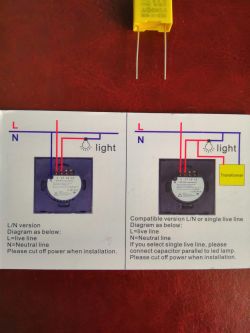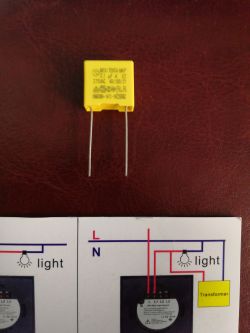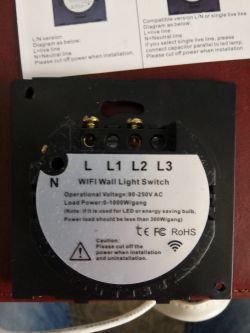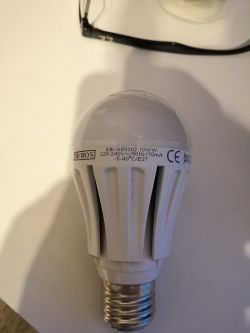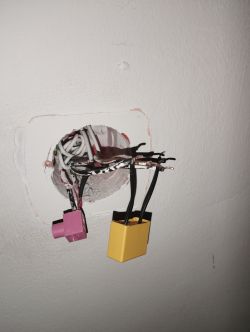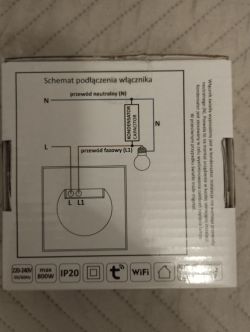FAQ
TL;DR: If your Majfrends Wi‑Fi switch makes LEDs flicker, especially on <3W loads, add the “LED adapter” in parallel—“it should simply be parallel to the bulb.” This stabilizes parasitic‑powered two‑wire setups and stops ghost light. [Elektroda, bubu1769, post #17677961]
Why it matters: This FAQ is for DIYers with older two‑wire lighting circuits who need to wire Majfrends‑type Wi‑Fi switches, place the capacitor correctly, and fix flicker.
Quick Facts
- In old installations, a wall switch box typically has L in and switched L1 out; neutral (N) is absent. [Elektroda, stanislaw1954, post #17677226]
- Majfrends‑type Wi‑Fi switches need L, N, and L1; without N at the box they will not run. [Elektroda, Zdzisław1980, post #17677584]
- The yellow “transformer” is a capacitor (LED adapter) that prevents LED glow when off. [Elektroda, bubu1769, post #17677234]
- Best place the capacitor in the lamp’s terminal block; wire the switch like the old one. [Elektroda, bubu1769, post #20182624]
- Use the adapter for blinking or very low loads (<3W); it “loads” the switch output. [Elektroda, bubu1769, post #17677961]
What is the yellow “transformer” that came with my switch?
It’s a capacitor, often called an LED adapter. It stops LED bulbs from glowing when the switch is off. Use it when you see ghost light or pulsing after shutdown. [Elektroda, bubu1769, post #17677234]
Can a Majfrends Wi‑Fi wall switch work with only two wires at the switch?
No. Without a neutral wire in the box, this Wi‑Fi switch will not run. Check your model’s correct connection diagram to confirm terminals. [Elektroda, Zdzisław1980, post #17677584]
Where should I install the LED adapter/capacitor?
Wire it in parallel with the bulb. Place it in the lamp canopy, a junction box, or at the fixture terminals. Parallel means across the same two lamp wires. [Elektroda, bubu1769, post #17677815]
How do I wire the switch if I only have L and L1 in the box?
With only L and L1 at the wall, mount the device near the lamp where neutral is present. This avoids chasing walls for a new 3‑core cable. [Elektroda, bubu1769, post #17677234]
My LED blinks or stays on when off. How do I fix it?
Add the LED adapter (capacitor) in parallel with the lamp. It provides a bleed path that stops ghost current and flicker. It’s especially effective on loads under 3W; “it should simply be parallel to the bulb.” [Elektroda, bubu1769, post #17677961]
I installed the capacitor but the bulb still flashes at full power. What’s wrong?
That symptom means the adapter is not in true parallel with the lamp. Move both adapter leads to the two lamp terminals. If it’s not parallel, the flicker continues. [Elektroda, bubu1769, post #17677815]
How do I identify L and L1 in an old, painted switch box?
Use an ordinary 230V tester to find the live feed. The incoming phase goes to L. The wire to the lamp goes to L1. [Elektroda, bubu1769, post #20182663]
Can I wire the LED adapter at the wall switch instead of the lamp?
Yes. Electrical location does not matter if the adapter is wired in parallel with the lamp. Ensure both leads span the lamp’s two conductors. [Elektroda, bubu1769, post #17677815]
When I switch off another room, my living‑room LEDs flash. Why?
Your touch switch likely uses a parasitic supply without neutral. That small current can flash LEDs when circuits interact. Add the LED adapter across the flashing lamp to load the output. [Elektroda, bubu1769, post #17677961]
What do the L and L1 terminals mean on the switch?
L is the phase input from the supply. L1 is the switched output going to the bulb. Connect the new switch exactly like the old one. [Elektroda, bubu1769, post #20182663]
Why does this Wi‑Fi switch need a neutral (N)?
It needs neutral to power its electronics continuously. Without N in the box, the switch will not run. Confirm this using the correct connection drawing. [Elektroda, Zdzisław1980, post #17677584]
How do I connect the new switch and adapter? (3 steps)
- Identify the phase with an ordinary 230V tester and mark the lamp lead.
- Connect phase to L and lamp lead to L1, same as the old switch.
- If LEDs blink, add the adapter next to the lamp across its two terminals. [Elektroda, bubu1769, post #20182663]
Is this safe to DIY, or should I call an electrician?
If you are unsure, hand it to someone who knows electricity. “At 230V you really don’t joke.” This avoids damage and shock risk. [Elektroda, bubu1769, post #20182663]
My auction diagram shows a two‑wire hookup. Is it the right model?
Listings can show a different model diagram. Compare your hardware to the correct drawing before wiring. Mismatched diagrams cause errors and flicker. [Elektroda, bubu1769, post #17677815]
Where exactly do I land the adapter leads?
Terminate the adapter across the same two screws or terminals that feed the bulb. That is a parallel connection. The lamp canopy is a convenient spot. [Elektroda, bubu1769, post #17677815]
